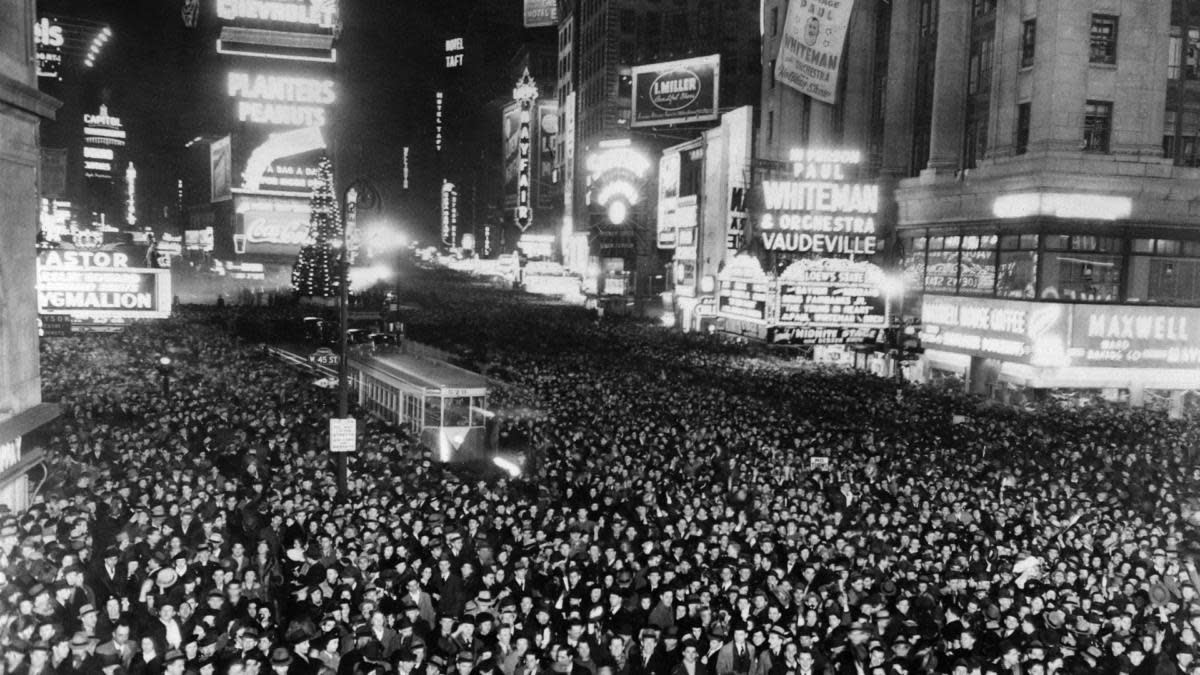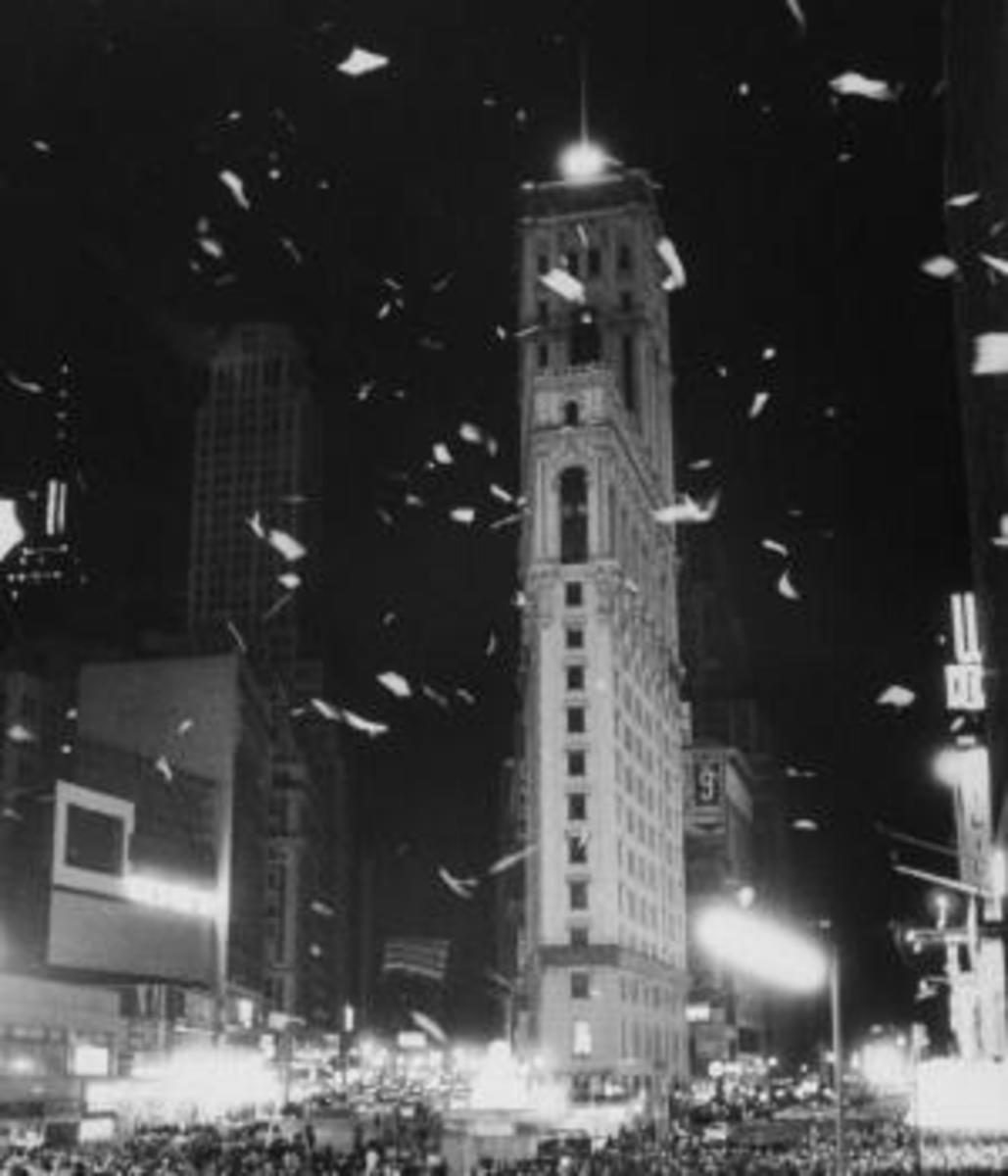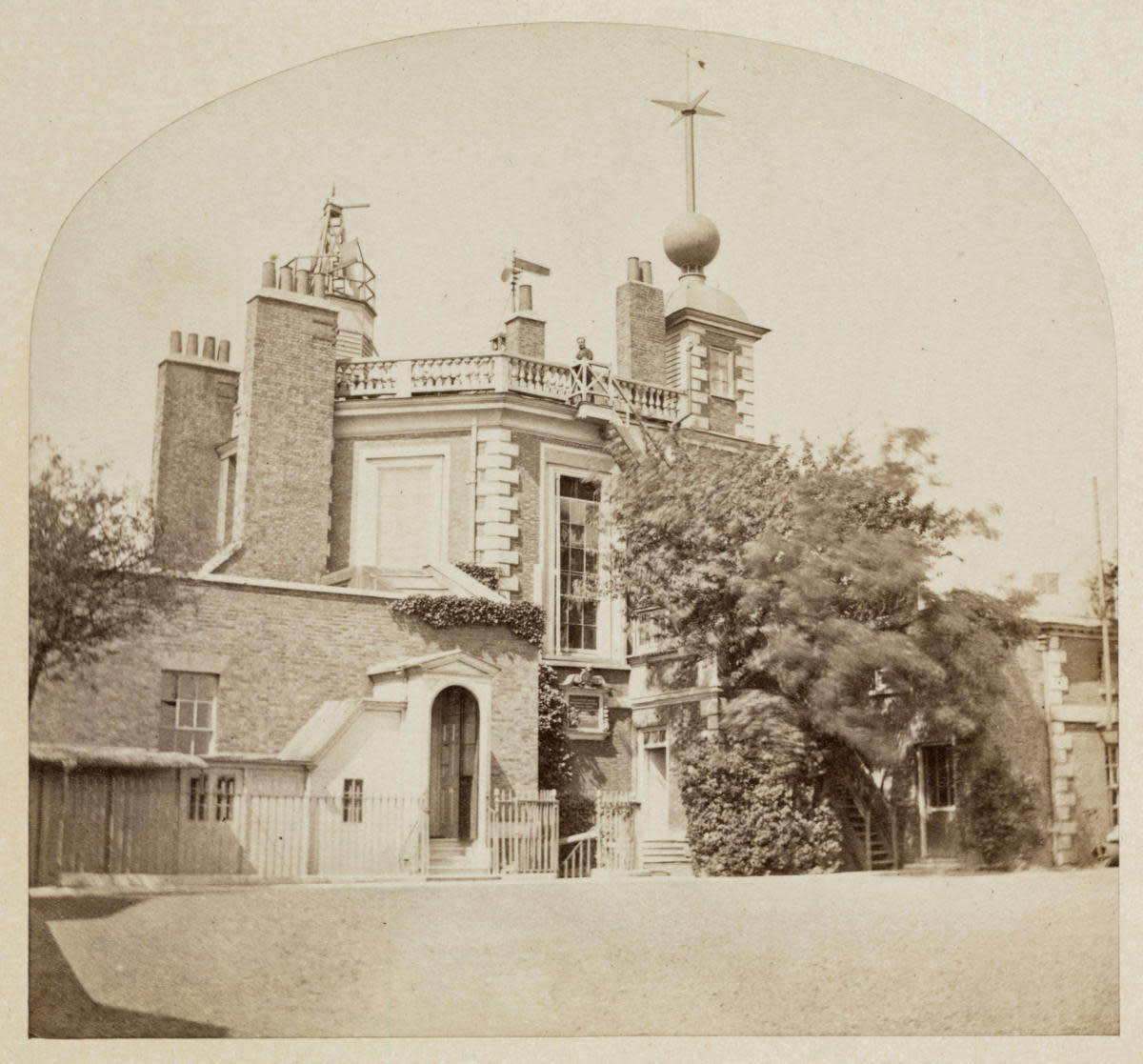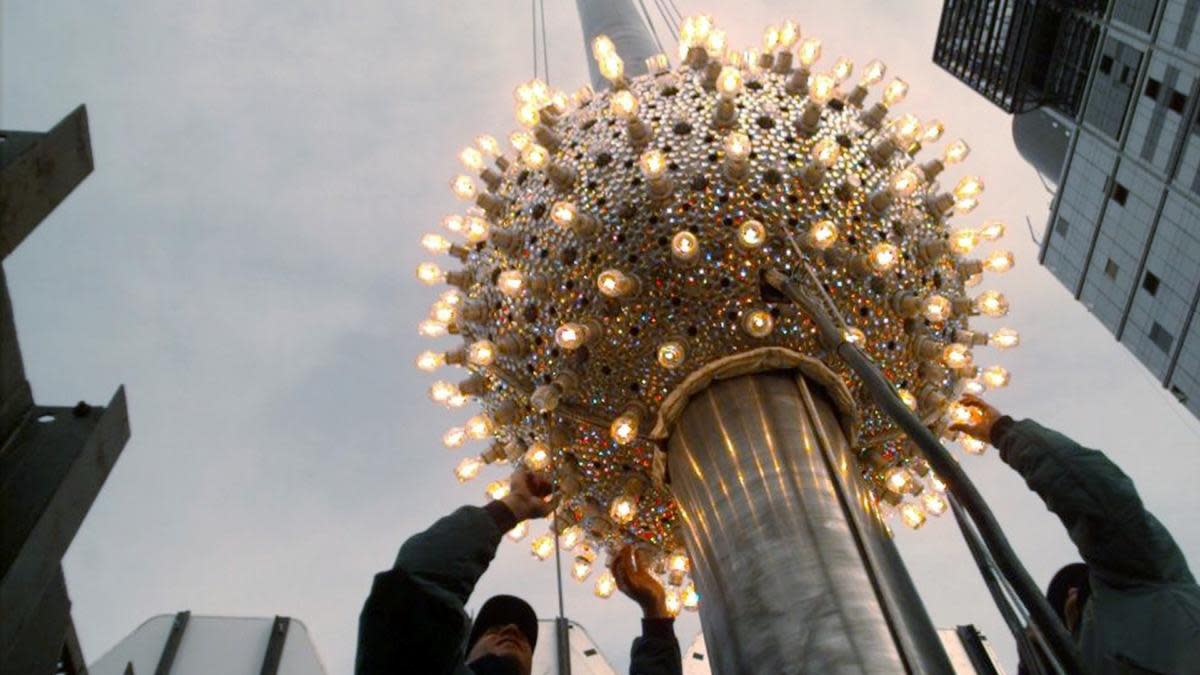How Times Square Became the
Home of New Year’s Eve
from history.com
by Christopher Klein
 The biggest night of the year was quickly approaching, and Adolph S. Ochs needed to find new
entertainment for his New Year’s Eve party. For the previous three years, the New York Times
publisher had set the skies above Manhattan ablaze with a midnight fireworks show launched from the
roof of his newspaper’s 25-story headquarters. The pyrotechnics had been a hit with the 200,000
revelers who filled the junction around Broadway and 42nd Street—newly rechristened Times Square
after its famous tenant—but the hot ash that rained down upon them concerned New York City
officials so much that they banned the fireworks from ushering in 1908.
Ochs wasn’t one to be easily deterred. His flashy New Year’s Eve bash had previously drawn crowds
away from the traditional celebration in Lower Manhattan, where New Yorkers listened as the bells
of Trinity Church rang in the new year. Yet without the fireworks show, Ochs would need a new
spectacle to lure the masses to the hinterlands of Times Square for New Year’s Eve.
The New York Times chief found the inspiration he needed at the Western Union Building downtown,
where a metal ball three-and-a-half feet in diameter dropped from the pinnacle of the building to
signify the time every weekday at noon. Nearby city dwellers peeked their heads out of horse-drawn
carriages and windows, craning their necks skyward as the sun reached its zenith. On the rare
occasions that the operation malfunctioned, it was the talk of the town and fodder for the
newspapers.
The biggest night of the year was quickly approaching, and Adolph S. Ochs needed to find new
entertainment for his New Year’s Eve party. For the previous three years, the New York Times
publisher had set the skies above Manhattan ablaze with a midnight fireworks show launched from the
roof of his newspaper’s 25-story headquarters. The pyrotechnics had been a hit with the 200,000
revelers who filled the junction around Broadway and 42nd Street—newly rechristened Times Square
after its famous tenant—but the hot ash that rained down upon them concerned New York City
officials so much that they banned the fireworks from ushering in 1908.
Ochs wasn’t one to be easily deterred. His flashy New Year’s Eve bash had previously drawn crowds
away from the traditional celebration in Lower Manhattan, where New Yorkers listened as the bells
of Trinity Church rang in the new year. Yet without the fireworks show, Ochs would need a new
spectacle to lure the masses to the hinterlands of Times Square for New Year’s Eve.
The New York Times chief found the inspiration he needed at the Western Union Building downtown,
where a metal ball three-and-a-half feet in diameter dropped from the pinnacle of the building to
signify the time every weekday at noon. Nearby city dwellers peeked their heads out of horse-drawn
carriages and windows, craning their necks skyward as the sun reached its zenith. On the rare
occasions that the operation malfunctioned, it was the talk of the town and fodder for the
newspapers.
 The New York Times publisher decided to put his own spin on the city’s beloved “time ball” to
usher in 1908. As people poured out of theaters, restaurants and streetcars into Times Square on
December 31, 1907, they gazed up to the top of the Times Tower and saw a dazzling orb made of wood
and iron, illuminated with 100 electric light bulbs.
As the crowd counted down the final fleeting seconds of 1907, workers used ropes and pulleys to
slowly lower the 700-pound ball down the flagpole crowning New York’s second-tallest building.
Unlike the Western Union Building’s time ball and others like it, which signified the time at the
moment the ball began to move, the sphere on top of the Times Tower marked the time when it
completed its descent. When the ball reached the bottom of the flagpole, the number 1908 lit up on
the skyscraper’s parapet to signal the arrival of the new year.
The ball drop was greeted, according to the New York Times, with a “wild human hullabaloo of
noise.” People blew horns and rang cow bells. Motorists in their new automobiles honked their
horns. On the Hudson River, steamships whistled, an appropriate reaction considering the nautical
roots of the time ball itself.
Long before its starring role at the New Year’s Eve celebration, the device was developed as a
means for keeping precise time at sea, where it was critical for navigation and determining
longitude. Port cities had used the firing of guns or ringing of bells to signify noontime, but
such methods proved too inaccurate for sea captains recalibrating their marine chronometers. To
provide a visual cue to ships in port, the first time balls were erected in Portsmouth, England, in
1829, and at the Royal Observatory in Greenwich, England, in 1833, at the time when Great Britain
was the world’s premier maritime power.
Typically perched at the highest point of cities, these brightly colored globes would be hoisted
to the top of poles and then released at a precise time, usually at noon to mark mean solar time
when the sun was directly overhead. The use of time balls spread to the United States in 1845, when
one was placed atop the U.S. Naval Observatory in Washington, D.C.
The New York Times publisher decided to put his own spin on the city’s beloved “time ball” to
usher in 1908. As people poured out of theaters, restaurants and streetcars into Times Square on
December 31, 1907, they gazed up to the top of the Times Tower and saw a dazzling orb made of wood
and iron, illuminated with 100 electric light bulbs.
As the crowd counted down the final fleeting seconds of 1907, workers used ropes and pulleys to
slowly lower the 700-pound ball down the flagpole crowning New York’s second-tallest building.
Unlike the Western Union Building’s time ball and others like it, which signified the time at the
moment the ball began to move, the sphere on top of the Times Tower marked the time when it
completed its descent. When the ball reached the bottom of the flagpole, the number 1908 lit up on
the skyscraper’s parapet to signal the arrival of the new year.
The ball drop was greeted, according to the New York Times, with a “wild human hullabaloo of
noise.” People blew horns and rang cow bells. Motorists in their new automobiles honked their
horns. On the Hudson River, steamships whistled, an appropriate reaction considering the nautical
roots of the time ball itself.
Long before its starring role at the New Year’s Eve celebration, the device was developed as a
means for keeping precise time at sea, where it was critical for navigation and determining
longitude. Port cities had used the firing of guns or ringing of bells to signify noontime, but
such methods proved too inaccurate for sea captains recalibrating their marine chronometers. To
provide a visual cue to ships in port, the first time balls were erected in Portsmouth, England, in
1829, and at the Royal Observatory in Greenwich, England, in 1833, at the time when Great Britain
was the world’s premier maritime power.
Typically perched at the highest point of cities, these brightly colored globes would be hoisted
to the top of poles and then released at a precise time, usually at noon to mark mean solar time
when the sun was directly overhead. The use of time balls spread to the United States in 1845, when
one was placed atop the U.S. Naval Observatory in Washington, D.C.
 Time balls became even more prevalent after the advent of telegraphy, when naval observatories
could signal current times to other cities. “All port towns of any consequence erected time balls,
mostly after the Civil War,” says historian Alexis McCrossen, author of Marking Modern Times: A
History of Clocks, Watches, and Other Timekeepers in American Life.
Although the time ball may seem a primitive or unnecessary method of public time-keeping, given
the long history of clocks adorning churches and civic buildings, McCrossen says they were actually
seen as modern symbols of precision. “Any resident of an American city in the first decade of the
20th century would have known what a time ball was. You were a forward-looking place if you had
one,” she says.
Soon, timekeeping orbs began to appear in landlocked cities such as Crete, Nebraska. There were
even suggestions to place one on top of the Washington Monument. At the time the ball drop was
introduced in Times Square, time balls were still in use at prominent locations from the Executive
Office Building next to the White House in Washington, D.C., to San Francisco’s Ferry Building. The
time ball in the nation’s capital remained in use until 1936, when radio communications rendered it
truly obsolete.
The time ball survived well into the 20th century in part because it offered a spectacle. “It was
exciting in the way the time ball in Times Square is exciting. There was something about
anticipating and waiting for the ball to fall,” McCrossen says. “I don’t think the anticipation of
bells ringing is the same as seeing an orb at the top of a pole. It’s magnetic in a way.”
The ball drop from the Times Tower quickly became a New Year’s Eve tradition. It endured even
after the New York Times moved into a new building around the corner in 1913, and has only been
interrupted in 1942 and 1943, when New York City was under World War II dim-out restrictions due to
German submarines lurking in the Atlantic Ocean. In those two years, organizers harkened back to
the old Trinity Church tradition with the ringing of bells from sound trucks parked in Times Square.
Time balls became even more prevalent after the advent of telegraphy, when naval observatories
could signal current times to other cities. “All port towns of any consequence erected time balls,
mostly after the Civil War,” says historian Alexis McCrossen, author of Marking Modern Times: A
History of Clocks, Watches, and Other Timekeepers in American Life.
Although the time ball may seem a primitive or unnecessary method of public time-keeping, given
the long history of clocks adorning churches and civic buildings, McCrossen says they were actually
seen as modern symbols of precision. “Any resident of an American city in the first decade of the
20th century would have known what a time ball was. You were a forward-looking place if you had
one,” she says.
Soon, timekeeping orbs began to appear in landlocked cities such as Crete, Nebraska. There were
even suggestions to place one on top of the Washington Monument. At the time the ball drop was
introduced in Times Square, time balls were still in use at prominent locations from the Executive
Office Building next to the White House in Washington, D.C., to San Francisco’s Ferry Building. The
time ball in the nation’s capital remained in use until 1936, when radio communications rendered it
truly obsolete.
The time ball survived well into the 20th century in part because it offered a spectacle. “It was
exciting in the way the time ball in Times Square is exciting. There was something about
anticipating and waiting for the ball to fall,” McCrossen says. “I don’t think the anticipation of
bells ringing is the same as seeing an orb at the top of a pole. It’s magnetic in a way.”
The ball drop from the Times Tower quickly became a New Year’s Eve tradition. It endured even
after the New York Times moved into a new building around the corner in 1913, and has only been
interrupted in 1942 and 1943, when New York City was under World War II dim-out restrictions due to
German submarines lurking in the Atlantic Ocean. In those two years, organizers harkened back to
the old Trinity Church tradition with the ringing of bells from sound trucks parked in Times Square.
 The ball itself has been through numerous makeovers in the decades since its debut, and is now in
its seventh iteration. It was converted to iron in 1920 and aluminum in 1954. During the 1980s, the
ball was dressed up as an apple for the “I Love New York” advertising campaign. In 1995, it became
a glitter ball worthy of Studio 54 when it was covered with 10,000 rhinestones. For the dawn of the
millennium, organizers crafted the largest crystal ball in the world, and in 2007 added LED
lighting to allow the geodesic sphere composed of 2,688 Waterford Crystal triangles to change
colors and patterns like a kaleidoscope.
More than a century after the first ball drop, the job of lowering the six-ton sparkling orb is
now computerized and timed to an atomic clock to ensure that it completes its descent precisely at
midnight—much to the delight of the one million people in Times Square who welcome the arrival of
the future through a signal from the past.
The ball itself has been through numerous makeovers in the decades since its debut, and is now in
its seventh iteration. It was converted to iron in 1920 and aluminum in 1954. During the 1980s, the
ball was dressed up as an apple for the “I Love New York” advertising campaign. In 1995, it became
a glitter ball worthy of Studio 54 when it was covered with 10,000 rhinestones. For the dawn of the
millennium, organizers crafted the largest crystal ball in the world, and in 2007 added LED
lighting to allow the geodesic sphere composed of 2,688 Waterford Crystal triangles to change
colors and patterns like a kaleidoscope.
More than a century after the first ball drop, the job of lowering the six-ton sparkling orb is
now computerized and timed to an atomic clock to ensure that it completes its descent precisely at
midnight—much to the delight of the one million people in Times Square who welcome the arrival of
the future through a signal from the past.